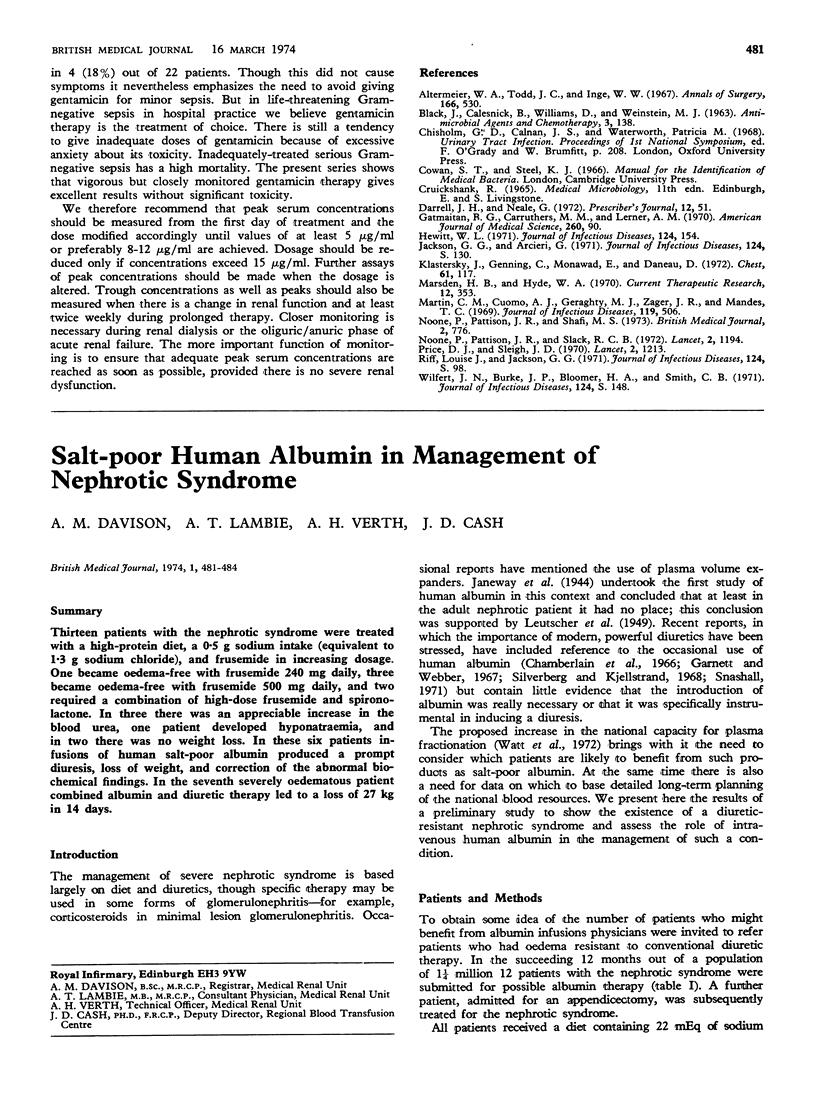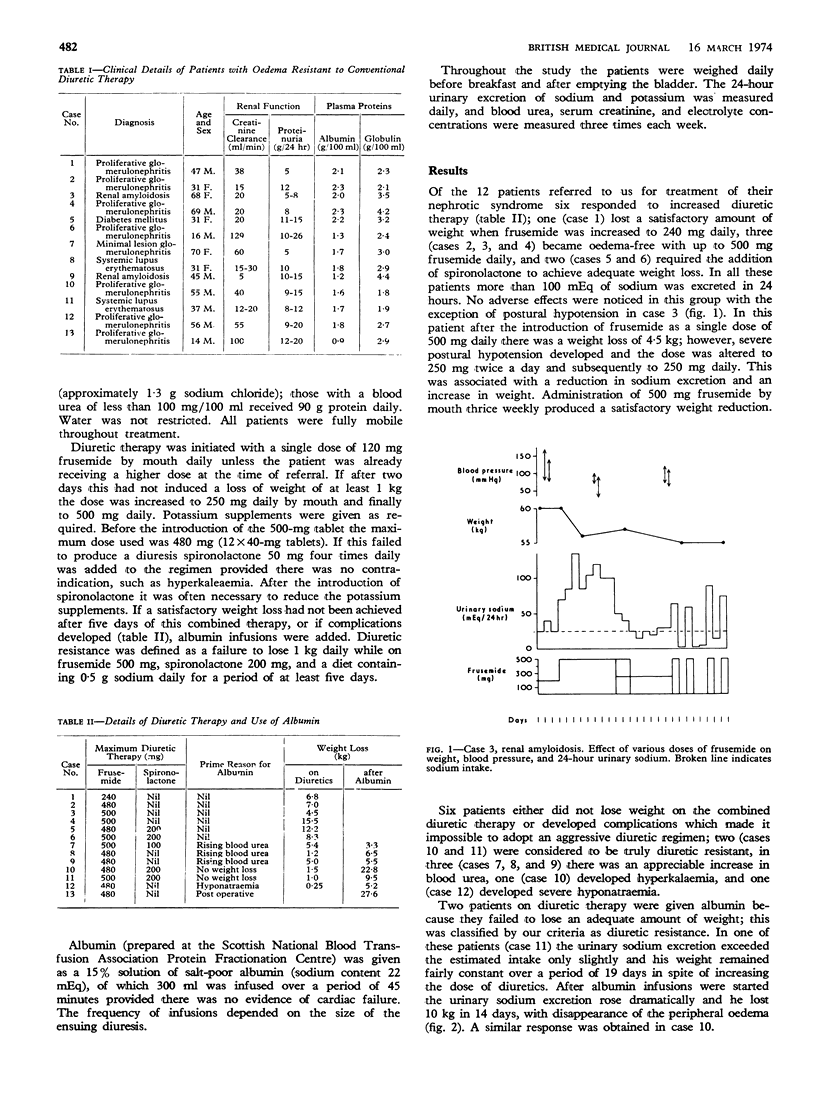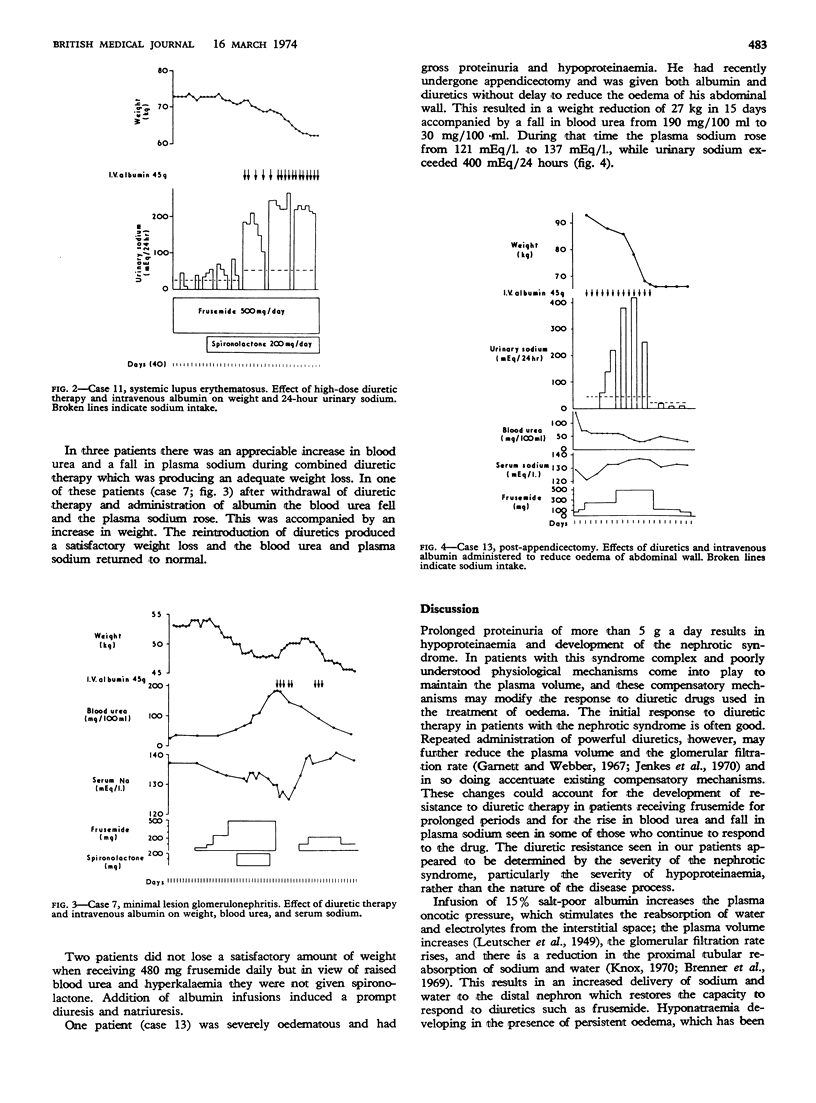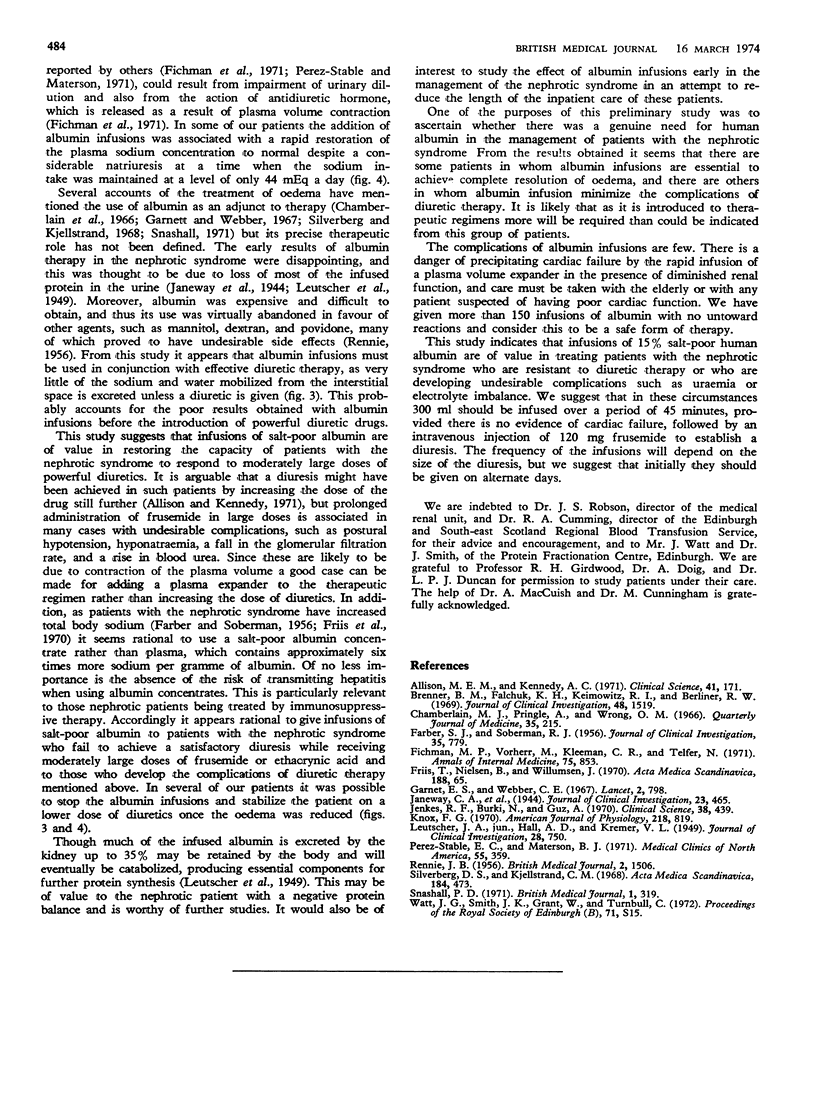Abstract
Thirteen patients with the nephrotic syndrome were treated with a high-protein diet, a 0·5 g sodium intake (equivalent to 1·3 g sodium chloride), and frusemide in increasing dosage. One became oedema-free with frusemide 240 mg daily, three became oedema-free with frusemide 500 mg daily, and two required a combination of high-dose frusemide and spironolactone. In three there was an appreciable increase in the blood urea, one patient developed hyponatraemia, and in two there was no weight loss. In these six patients infusions of human salt-poor albumin produced a prompt diuresis, loss of weight, and correction of the abnormal biochemical findings. In the seventh severely oedematous patient combined albumin and diuretic therapy led to a loss of 27 kg in 14 days.
Full text
PDF



Selected References
These references are in PubMed. This may not be the complete list of references from this article.
- Allison M. E., Kennedy A. C. Diuretics in chronic renal disease: a study of high dosage frusemide. Clin Sci. 1971 Sep;41(3):171–187. doi: 10.1042/cs0410171. [DOI] [PubMed] [Google Scholar]
- Brenner B. M., Falchuk K. H., Keimowitz R. I., Berliner R. W. The relationship between peritubular capillary protein concentration and fluid reabsorption by the renal proximal tubule. J Clin Invest. 1969 Aug;48(8):1519–1531. doi: 10.1172/JCI106118. [DOI] [PMC free article] [PubMed] [Google Scholar]
- Chamberlain M. J., Pringle A., Wrong O. M. Oliguric renal failure in the nephrotic syndrome. Q J Med. 1966 Apr;35(138):215–235. [PubMed] [Google Scholar]
- FARBER S. J., SOBERMAN R. J. Total body water and total exchangeable sodium in edematous states due to cardiac, renal or hepatic disease. J Clin Invest. 1956 Jul;35(7):779–791. doi: 10.1172/JCI103330. [DOI] [PMC free article] [PubMed] [Google Scholar]
- Fichman M. P., Vorherr H., Kleeman C. R., Telfer N. Diuretic-induced hyponatremia. Ann Intern Med. 1971 Dec;75(6):853–863. doi: 10.7326/0003-4819-75-6-853. [DOI] [PubMed] [Google Scholar]
- Friis T., Nielsen B., Willumsen J. Total exchangeable sodium in chronic nephropathy with and without hypertension. Acta Med Scand. 1970 Jul-Aug;1-2(1):65–74. doi: 10.1111/j.0954-6820.1970.tb08006.x. [DOI] [PubMed] [Google Scholar]
- Garnett E. S., Webber C. E. Changes in blood-volume produced by treatment in the nephrotic syndrome. Lancet. 1967 Oct 14;2(7520):798–799. doi: 10.1016/s0140-6736(67)92234-9. [DOI] [PubMed] [Google Scholar]
- Jewkes R. F., Burki N., Guz A. Observations of renal function in patients undergoing therapeutic diuresis with frusemide. Clin Sci. 1970 Apr;38(4):439–449. doi: 10.1042/cs0380439. [DOI] [PubMed] [Google Scholar]
- Knox F. G. Effect of increased proximal delivery on furosemide natriuresis. Am J Physiol. 1970 Mar;218(3):819–823. doi: 10.1152/ajplegacy.1970.218.3.819. [DOI] [PubMed] [Google Scholar]
- Perez-Stable E. C., Materson B. J. Diuretic drug therapy of edema. Med Clin North Am. 1971 Mar;55(2):359–372. doi: 10.1016/s0025-7125(16)32525-1. [DOI] [PubMed] [Google Scholar]
- RENNIE J. B. Treatment of chronic renal oedema. Br Med J. 1956 Dec 29;2(5008):1506–1508. doi: 10.1136/bmj.2.5008.1506. [DOI] [PMC free article] [PubMed] [Google Scholar]
- Silverberg D. S., Kjellstrand C. M. Clinical use of high doses of furosemide (Lasix) in the treatment of resistant nephrotic edema. Acta Med Scand. 1968 Dec;184(6):473–479. doi: 10.1111/j.0954-6820.1968.tb02488.x. [DOI] [PubMed] [Google Scholar]


